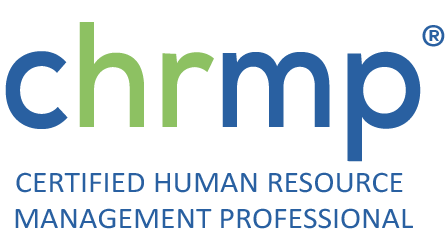Are you noticing an unusually high number of employees leaving your organization? Could this trend be affecting your company’s productivity and morale? If you’re nodding in agreement, it might be time to delve deep into understanding your company’s attrition rate.
Thank you for reading this post, don't forget to subscribe!By the end of this post, you’ll have a solid grasp of what the attrition rate is, how to calculate it, and effective strategies to manage it, ensuring you retain top talent and maintain a productive workforce.
Table of Contents
ToggleDefinition and Importance of Attrition Rate
What is Attrition Rate?
The attrition rate, often mistaken with turnover, measures the percentage of employees who leave an organization over a specific period, which can affect everything from team dynamics to project continuity. This metric is crucial for HR professionals as it not only reflects on organizational health but also on employee satisfaction and engagement levels.
Attrition refers to the voluntary departure of employees from a company, excluding instances of involuntary separations such as terminations or layoffs. Employee turnover, on the other hand, encompasses the collective departure of workers from a company within a specific timeframe, consisting of both voluntary resignations and involuntary separations such as terminations or layoffs.
High attrition rates can suggest underlying issues such as poor management practices, inadequate compensation, or unsatisfactory working conditions that need immediate attention.
Conversely, a low attrition rate indicates strong employee retention, suggesting a healthy, supportive workplace.
Factors Influencing Attrition Rate
Attrition rates are influenced by a myriad of factors that can be broadly categorized into internal and external factors. Understanding these can help organizations develop more effective strategies to retain talent and maintain a stable workforce.
Internal Factors Impacting Attrition Rates
Job Satisfaction: This is often the cornerstone of employee retention. Job satisfaction is influenced by the work itself, the perceived value of the job, recognition, and opportunities for professional growth. Employees who find their work meaningful and recognize opportunities for personal advancement are less likely to leave.
Compensation Levels: Competitive compensation packages are crucial for retention. This includes not only salaries but also benefits like health insurance, retirement plans, and bonuses. For example, organizations like Apple, Microsoft, and Amazon are renowned for their competitive salaries and comprehensive benefits, which contribute to their lower attrition rates.
Work-Life Balance: With the increasing pace of modern life, achieving a balance between work and personal life is more important than ever. Companies that promote flexible working hours, remote work options, and sufficient vacation time tend to retain employees longer. Nike, for instance, has implemented flexible work policies that allow employees to balance personal life and work commitments effectively.
Relationships with Management: The direct relationship between employees and their managers can significantly impact attrition rates. Good management practices that foster respect, trust, and open communication can improve employee retention. Training managers to be better leaders, as Deloitte has done through its “Emerging Leaders Development Program (ELDP),” which identified key behaviors of its most successful managers, can lead to decreased attrition rates.
External Factors Impacting Attrition Rates
Economic Conditions: The overall economic environment plays a significant role in attrition rates. During economic downturns, such as the global recession triggered by the COVID-19 pandemic, employees often value job security more highly and are less likely to leave voluntarily. Conversely, in a booming economy, where job opportunities are plentiful, individuals might be more inclined to switch jobs in pursuit of better offers.
Industry Employment Trends: Different industries experience varying levels of attrition due to inherent characteristics of the sector. For instance, the tech industry often sees a higher turnover due to the fast-paced nature of technological advancement and the constant demand for new skills. In contrast, government jobs, which tend to offer more stability and benefits, usually have lower attrition rates.
Geographic Location: The location of a company and its operations can also influence attrition rates. Regions with a high concentration of industries may see higher turnover rates as opportunities for job hopping increase. For example, Silicon Valley experiences high employee turnover due to the dense concentration of tech firms and the competitive job market.
Legislative and Regulatory Changes: Government policies and regulations can also have a significant impact on attrition rates across various industries. Changes in labor laws, for instance, can affect how organizations manage their workforce, leading to increased or decreased attrition. For example, new regulations that improve labor rights, such as minimum wage increases, mandatory benefits, or improved workplace safety standards, can enhance job satisfaction and reduce voluntary attrition. Conversely, stringent regulations that create operational challenges might increase costs for businesses, potentially leading to involuntary attrition through layoffs or restructuring.
Calculating Attrition Rate
The formula to calculate the attrition rate is a crucial tool for HR professionals to understand voluntary employee turnover and to gauge the stability of their workforce over a specific period. Here’s a deeper look at each component of the formula and how they interact:
Attrition Rate Formula Breakdown
Attrition Rate (%) = (Number of Departures / Average number of employees) x 100
Number of Departures: This refers to the total number of employees who have left the company during a given period, regardless of the reason. This includes resignations, layoffs, terminations, retirements, and any other form of departure that removes an individual from the company’s payroll.
Average Number of Employees: This is the mean number of employees working at the company during the period under review. It accounts for fluctuations in employee numbers due to new hires or departures and is typically calculated by adding the number of employees at the start of the period to the number of employees at the end of the period, then dividing by two. For more precise calculations, especially in larger organizations or in cases where workforce numbers fluctuate significantly, the average might be calculated on a monthly or even a weekly basis.
Example Explained
To illustrate the calculation, let’s assume:
- Initial Employee Count: A company starts the year with 100 employees.
- Hiring: Over the year, the company hires 20 additional employees, increasing the total count at some point to 120.
- Departures: Throughout the year, 15 employees leave the company for various reasons.
To find the Average Number of Employees, you add the number at the start to the number at the end of the period and then divide by two. At the end of the period, assuming no other changes, the company has 105 employees (120 hired – 15 departed = 105 remaining).
Average Number of Employees = (100 + 105) / 2 = 102.5
Attrition Rate (%) = (15 / 102.5) x 100 = 14.63%
Click here to download 50 HR Metrics
Understanding Different Types of Attrition and Their Implications
Attrition is not a monolithic concept. There are several types, each providing insights into various workplace dynamics and underlying issues. Understanding these can help organizations tailor their HR strategies more effectively.
Voluntary Attrition
Voluntary attrition occurs when employees choose to leave the organization, often in pursuit of better opportunities or more fulfilling roles elsewhere. High voluntary attrition is common in sectors with intense work environments, where the demands of the job can push employees to seek less stressful positions in other companies.
Involuntary Attrition
Involuntary attrition happens when the employer initiates the separation, such as through layoffs, dismissals, or redundancies. This type of attrition is prevalent in the tech industry, especially during economic downturns.
Demographic-Specific Attrition
This type of attrition refers to higher turnover rates among specific demographic groups, which can indicate systemic issues within an organization. In the tech sector, efforts are being made to reduce attrition rates among underrepresented groups by fostering a more inclusive and supportive work environment. This strategy not only helps reduce demographic-specific attrition but also enhances the overall workplace culture.
Internal Attrition
Internal attrition involves employees who leave their current positions for other roles within the same company. This movement can be a positive sign of internal growth and employee development. However, it might also indicate dissatisfaction with current roles, prompting employees to move to departments or positions where they feel they can have a more significant impact or better work-life balance.
Retirement-Induced Attrition
Significant in organizations with aging workforces, retirement-induced attrition occurs when employees leave the workforce permanently due to retirement. This type of attrition is particularly impactful in physically demanding industries such as manufacturing, where long-term job demands can accelerate career endpoints. While natural and expected, managing this attrition type involves strategic planning for knowledge transfer and succession to ensure continuity and preserve organizational memory.
Defining High Attrition Rate and Its Impact on Organizations
High Attrition Rate Defined
A high attrition rate refers to an above-average percentage of employees leaving an organization within a given timeframe compared to industry norms or historical company data. This rate is context-specific; what is considered high in one industry or company may be normal in another.
Generally, a high attrition rate is indicative of problems within the company that need addressing, ranging from poor work conditions and inadequate compensation to ineffective management and lack of career development opportunities.
A ‘good’ attrition rate varies by industry, but a rate of around 10% is generally manageable and expected across various sectors.
The Impact of High Attrition Rate
Increased Costs
The financial impact of high attrition is one of the most immediate and tangible effects. Continually replacing staff involves recruitment, training, and onboarding costs, which can accumulate to a substantial amount. Research from Gallup suggests that the expense associated with replacing an employee typically ranges from one-half to two times the individual’s salary. This figure includes not just the hiring process but also the productivity ramp-up time, which can detract significantly from the organizational output.
Loss of Expertise
High attrition rates, especially those involving skilled and experienced personnel, can lead to a significant drain of knowledge and expertise. For example, organizations in the aerospace and defense (A&D) industry have historically grappled with challenges stemming from the retirement-induced attrition of their highly skilled aerospace engineers. The departure of such key personnel means the loss of invaluable experience and can impede ongoing projects and the transfer of unique knowledge to incoming generations.
Cultural Impact
Beyond financial and knowledge loss, high attrition rates can severely affect the workplace culture. Continuous turnover can undermine employee morale and engagement. In industries known for high turnover, such as healthcare, the ongoing loss of team members can lead to a decrease in team cohesion and a sense of instability among remaining employees. It can foster a culture of disengagement, where employees feel less committed and more inclined to leave, thereby perpetuating a cycle of turnover.
Reduced Client and Stakeholder Confidence
Frequent changes in personnel can also affect external perceptions of an organization. Clients and stakeholders may feel less confident in a company’s stability and reliability when they see high employee turnover. This can lead to decreased customer satisfaction and potentially impact business partnerships and revenue.
Strategic Setbacks
From a strategic viewpoint, high attrition can divert attention from long-term goals to short-term crisis management in staffing. Leaders may find themselves perpetually addressing immediate HR concerns at the expense of strategic planning and implementation, which can stifle innovation and growth.
Managing and Mitigating Attrition: Strategies and Real-World Examples
Effectively managing attrition involves a multi-faceted approach that addresses the various stages of an employee’s lifecycle within the organization, from hiring to leadership development. Here’s how some leading companies apply these strategies:
Strategic Hiring
Strategic hiring ensures that new hires are well-suited not only for the roles they are hired for but also for the company culture and long-term objectives. This reduces the likelihood of early turnover and helps in building a more committed workforce.
Example: Zappos, an online retailer known for its customer service, takes strategic hiring to another level by offering a cultural fit interview along with the standard hiring process. This interview assesses how well a candidate aligns with the company’s ten core values. Zappos even offers new hires a monetary incentive to leave after the initial training period if they feel the company isn’t a good fit for them. This approach ensures that those who stay are truly aligned with the company’s ethos, which significantly lowers attrition rates.
Improved Employee Engagement
Employee engagement is crucial in retention strategies. Engaged employees are more likely to be productive, happy, and motivated to stay with the company.
Example: Salesforce has set a benchmark in implementing employee engagement programs. The company uses regular pulse surveys and feedback tools to gauge employee satisfaction and needs. Based on this data, Salesforce tailors its benefits and programs to match employee needs, such as wellness programs, flexible working conditions, and comprehensive family benefits. These initiatives have been credited with maintaining low attrition rates and high employee satisfaction scores.
Effective Leadership Development
Effective leadership is key to managing attrition. Leaders influence how their teams perceive their jobs and the company, affecting their likelihood of staying long-term.
Example: Google invests heavily in leadership development through its Project Oxygen. The initiative began by analyzing internal data to determine what successful Google managers do. They distilled these practices into training programs that all managers undergo. By focusing on improving the quality of management throughout the company, Google has seen improvements in team outcomes and lower attrition rates.
Competitive Compensation and Benefits
Competitive compensation and comprehensive benefits are also vital in managing attrition. They ensure employees feel valued and reduce the temptation to move to competitors.
Example: Netflix employs a unique approach to compensation by letting employees choose each year how much of their compensation they want in cash versus stock options. This flexibility allows employees to personalize their benefits according to their financial situations, which enhances satisfaction and loyalty.
Supportive Work Environment
Creating a supportive work environment and offering flexibility can also significantly reduce attrition rates.
Example: HubSpot has pioneered a culture of flexibility and growth, which has been integral in maintaining a low attrition rate. The company offers unlimited vacation days and the flexibility to work remotely, appealing to employees’ desire for a work-life balance that suits their personal and professional lives.
Conclusion
The attrition rate is a vital metric that offers insights into many aspects of organizational health. By understanding its nuances and effectively addressing the factors that influence it, companies can improve their operational stability and employee satisfaction, ultimately leading to sustained success.





